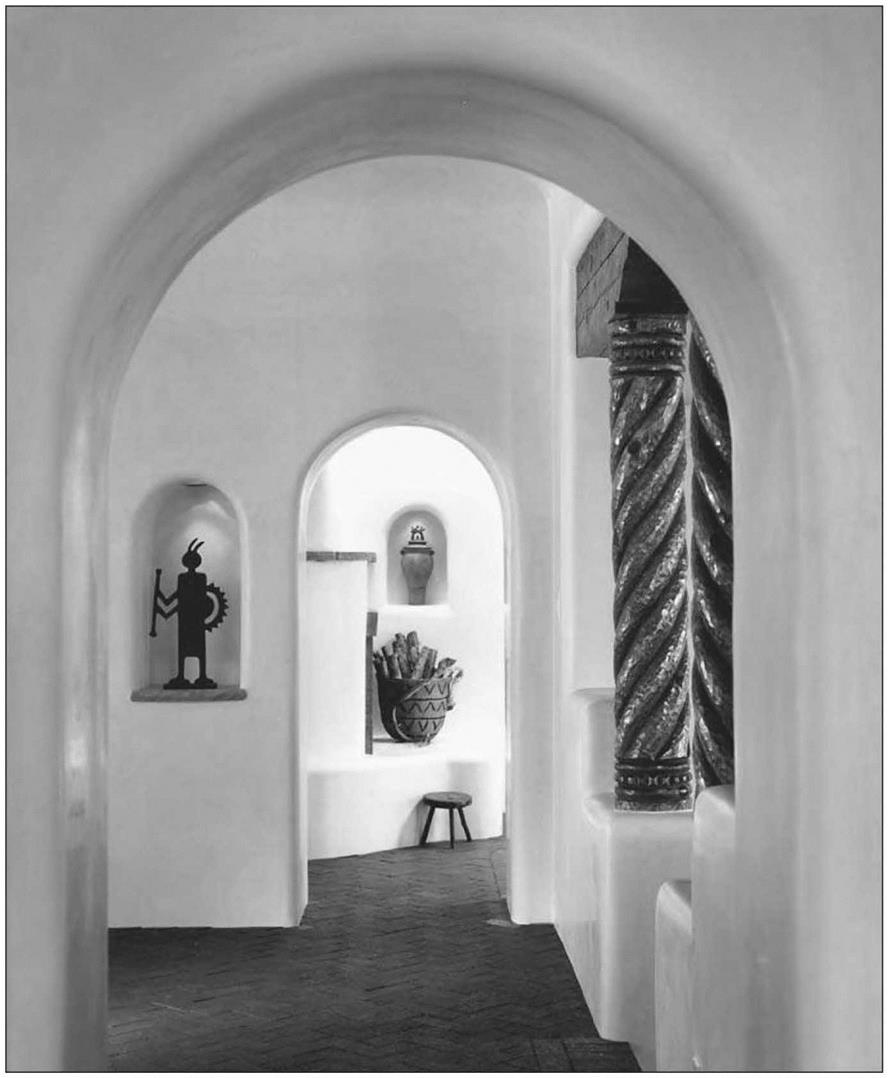Clay-Based Plasters
From a Building Biology standpoint, clay – based plasters provide a superior wall finish because of the remarkable hygroscopic properties of clay. For more information about mixing your own plasters, we recommend The Natural Plaster Book (listed at the end of this chapter). Resources for commercially prepared clay-based plaster are:
• American Clay Enterprises: A variety of clay-based plasters for interior finishing, including three texture styles and 42 colors.
• Japanese Wall: Several lines of interior and exterior natural plasters imported from Japan. All-natural, nontoxic plasters contain sand, diatomite earth, clay, natural stone chips, and straw.
Because of the porous nature of plaster, it will stain and show fingerprints if left unfinished. Plaster walls, which were the norm before the advent of gypsum board or Sheetrock, were commonly painted or covered with wallpaper. Today, homeowners enjoy the organic feel of the color variations in natural plaster and it is fashionable to leave it unpainted. Most people prefer to apply a clear finish over it to protect and enhance its natural beauty, or to leave the plaster unsealed.
Natural beeswax finishes will protect the wall while maintaining its permeability. Traditionally, beeswax was applied with a hot knife and troweled on the wall. There are very few craftsmen who know this art form today. However, we have found that a natural beeswax furniture polish can be applied with a cloth and buffed. As with all plant chemistry products, chemically sensitive individuals may find the scent objectionable and should test a small sample first.
Some synthetic finishes will create a more impervious seal and are less expensive, easier to apply, and more enduring. Synthetic finishes should be carefully evaluated for chemical content and outgassing. Some maybe toxic or increase problems with static electricity. Since most make the surface nonporous, they may encourage mold growth on the paper backing of the gypsum lathing behind the plaster if moisture becomes trapped. So, as with gypsum board, if a water accident occurs it should be quickly dried. We have successfully used the following finishes:
• American Clay Black Soap Finish: A
gelatinous castile soap infused with potash
to enrich color and create a soft patina
|
|
This Santa Fe Style interior combines hard trowelled plaster wall finishes with brick flooring and stone detailing to create a healthy interior. Architect: Baker-Laporte and Associates; Builder: Prull and Associates. Photo: List Dennis.
|
• American Clay Gloss Sealer: Low-VOC product used for high-traffic areas, providing water resistance to walls; easy to clean
• American Clay Penetrating Sealer: A
low-VOC soy resin/acrylic spray-on sealer that increases durability and water resistance
• Livos Glievo Liquid Wax: Apply a thin coat and hand buff
• Окоп Seal and Finish: For satin gloss








Leave a reply